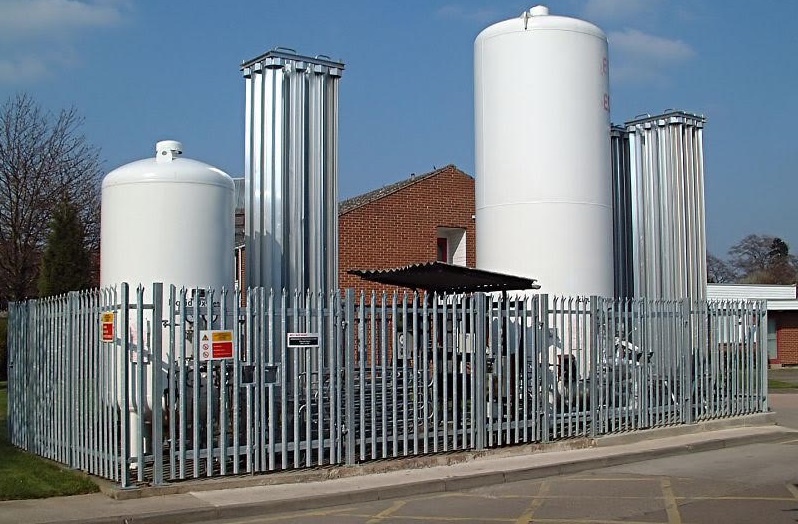What’s Gone Wrong With Hospitals’ Oxygen Supply?
Sat 10:58 am +01:00, 9 Jan 2021
An experienced cryogenics engineer has got in touch with an explanation for the problems with oxygen supply that some hospitals are currently experiencing. He has a solution.
Your regular weekly update from our in-house senior doctor revealed yesterday that: “Problems have arisen with oxygen supply at some hospitals – this is not due to lack of oxygen per se, but an engineering problem with the pipe pressure. Non-invasive ventilation with CPAP which most patients require needs a lot of oxygen and the requirement is more than the pipework can supply in some places.”
Early in April last year I was puzzled by a report in the Independent of a mysterious “critical incident” in Watford General Hospital which was forced to close its A&E Department after its oxygen supply was cut off. A BBC documentary “Hospital“, which I saw during the Summer, showed an incident occurring at about the same time of critical oxygen supply problems. Pressures dropped below minimum levels at the Royal Free London hospital as April evening temperatures fell. The immediate response was to transfer patients from non-invasive CPAP therapy to lower-demand intubation ventilators. The NHS manager was shown later fast-tracking the procurement and installation of an extra healthcare cryogenic supply tank or bulk storage tank in only 10 days. This was a creditable achievement, but sadly too late to benefit some of the COVID-19 patients, including an elderly Jewish gentleman who might, or might not, have survived had he remained on CPAP. I learned intubation is reportedly well-known to be contra-indicated for older and frail patients.
I am familiar with cryogenic systems’ technology and practice, having worked in and consulted for the marine Liquid Natural Gas (LNG) sector worldwide and its professional advisory bodies since the late 1970s. Bulk gases are stored in liquid form as, for example, oxygen gas occupies 800 times the volume of the same amount of liquid. But the liquid has to receive heat so that it “boils-off” back into gas. The problem with simple bulk liquid storage gas supply installations is not so much the pipework pressure limitations, but the air-liquid heat exchanger capacity which generates the supply pressure by “boiling-off” the extremely cold liquid oxygen. LNG boils at -161.5oC at atmospheric pressure, not much warmer than the boiling point of liquid oxygen used in hospital cryogenic supply tanks which is -183oC. The liquid is fed into vertical finned tube heat exchangers which draw heat from the surrounding air to “boil-off” the liquid gas. The flow of the liquid from tank to exchanger is automatically controlled to maintain supply pressure to the outlet which feeds the hospital piping system. During cold, moist conditions, the exchanger tubes become coated with frost which insulates the tube rack. With high demand, the increasing ice coating insulates too much of the exchanger surface area and prevents further uptake of heat from the air. Where “boil-off” fails to meet demand, pressure falls to hospital consumers, usually a combination positive pressure non-invasive (CPAP) therapy, nasal cannulas or invasive intubation ventilators. This leading to triage during emergencies. If oxygen supply cannot be restored, higher consumers have to be shut off in favour of lower consumers and heavy cylinders of compressed medical oxygen, which have to be frequently replaced are substituted.
The short- to medium-term solution is surprisingly simple and well-known to marine engineers responsible for practical LNG operations. In periods of high gas demand or high need to boil-off cryogenic liquid, hard ice coat build-up from the exchanger tubes can be melted by playing a relatively low volume of fresh water (e.g. from a hospital fire hose) onto the heat exchanger. Continuing to spray water will significantly increase boil-off gas capacity as water has 4,000 times the heat capacity for a given volume than air. This technique was also known to the US healthcare sector. In May 2020 Health Facilities Management Magazine suggested that water or steam be used. In the UK, the Independent reports that “although incidents have been widely reported as NHS trust bosses were told… not to try to push oxygen systems beyond their limits” as “unapproved procedures may cause permanent damage”. The only alternative advice given apparently was to provide compressed oxygen as backup in heavy cylinders.
Having tried to put forward the solution on several occasions with the local NHS in Wales and in the MSM without response or acknowledgement, I am dismayed to hear yet again nothing seems to have been learned and oxygen capacity remains a serious bottleneck. It was reported that the unused Nightingales have, in London at least, been cannibalised for their temporary units. It should have been obvious to those responsible that January, with its near-freezing temperatures, was likely to be much more problematic than a warm Spring. But we have become well aware of the procedure-driven and budget-driven limitations within the NHS.
https://lockdownsceptics.org/


